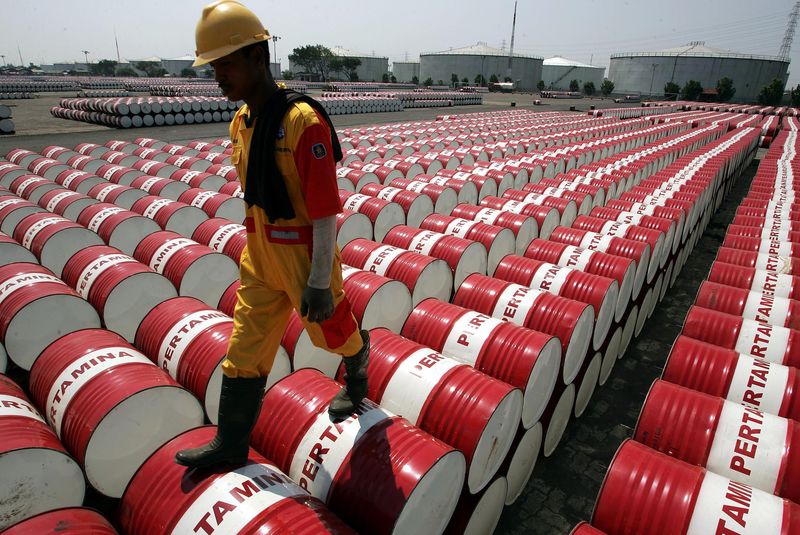Investing.com - The stakes are high for a successful outcome to the trade talks between the U.S. and China. President Donald Trump has tweeted about it and the crude market's counting on it to solidify recent price gains.
U.S. West Texas Intermediate crude settled within striking distance of the key $50 per barrel mark on Tuesday after U.S. Commerce Secretary Wilbur Ross said there was a "very good chance" for Washington to resolve its months-long trade war with Beijing. Trump also tweeted that “talks with China are going very well!”
In one of its strongest finishes since the start of the year, WTI settled up $1.26, or 2.6%, at $49.78 per barrel after a 2019 high at $$49.45.
Brent, the U.K.-traded global crude benchmark, rose $1.29, or 2.3%, at $58.62, after rallying to $58.84 earlier.
WTI has gained about $7 per barrel or 16% from the 18-month lows hit on Christmas Eve. But those gains haven’t come easy. Aside from Tuesday's rally, almost every session since Jan. 2 has been wracked with volatility, with the market struggling to hold to early gains toward the close.
That's because uncertainty about the global economy, particularly China, has been holding back this year's comeback rally in crude after the 40% drop from last year's highs, despite aggressive Saudi output cuts and a Federal Reserve that has indicated it might not raise interest rates like last year.
Some analysts say they aren't sure that China, the world's top oil consumer, will add meaningfully to its energy demand in 2019 to keep crude prices bubbling higher even if it achieved a trade deal with the U.S,, which seems unlikely in the current round of discussions.
“China is undoubtedly the biggest concern, especially given the weakness in the latest economic data,"' London-based Energy Aspects said in a note this week. "Unsurprisingly, China's crude buying is set to soften in the near term, following record imports in November and still elevated arrivals in December.”
Goldman Sachs (NYSE:GS) said in a client advisory issued on Monday that China’s oil demand growth was expected to drop by 26% to 350,000 barrels per day year on year in 2019, down from 475,000 bpd in 2018. Chinese oil consumption averages about 8.4 million bpd a year.
Large refineries in China seem in no rush to take crude imports due to weak demand growth ahead of the Lunar New Year festival in February -- which often results in holidays of up to a week -- and a hefty maintenance schedule in April.
Amrita Sen, senior analyst at Energy Aspects, said in a separate commentary published in The Financial Times on Tuesday that to really move the needle on crude price gains, the Saudis might have to do what seemed unthinkable a year ago: cut output of their lightest, sweetest barrels and restrict exports to Asia, the fastest-growing demand center.
The Saudi strategy has so far been to cut the heavier, sour crude they have been sending to the U.S., which gets turned into diesel and other middle distillates. The U.S. shale industry has meanwhile continued with little disruption its rampant output and export of the sweet crude that is used mainly for gasoline production, countering the global impact of the Saudi cuts.
John Kilduff, founding partner at New York energy hedge fund Again Capital, said that for WTI get to its near-term target of $52 to $55, light crude stockpiles have to drop.
"We need several weeks of strong drawdowns in the U.S. for that price range to hold, numbers in excess of 3 million barrels each week," said Kilduff, referring to the weekly supply-demand data from the U.S. Energy Information Administration.
The next EIA data set is due on Wednesday, with analyts forecasting a crude inventory draw of 3.3 million barrels for the week ended Jan. 4.
